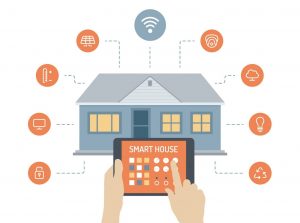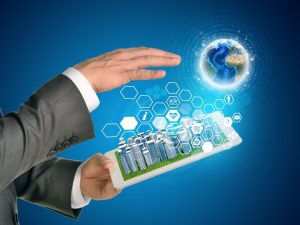What to expect from IoT, the technology of future
We live in an age where technology is improving at an unprecedented rate in human history. In the span of a decade, phones, computers, vehicles and almost all tools we use in our daily lives gained self-operating capabilities and connectivity over the internet. The ability to interact and communicate with devices makes even the most mundane tools such as refrigerators, dishwashers or televisions intelligent as we are starting to see a thriving market for devices that can receive data and have the ability to be controlled remotely over the internet. That is the promise of this technology after all; homes, offices and vehicles will be monitored and controlled remotely by using computers and smartphones, and all devices will be able to share data with each other for superior user control.
The term IoT describes a growing network of connected “things” that contain sensors and processors and have the ability to communicate with each other. Both for individuals and businesses, every new piece of equipment, tool or machine is being designed and produced with IoT taken into consideration. New smart devices and consumer products appear every day to meet the increasing demand and lead us to a new way of life — where every appliance, tool or machine is smart and, in a sense, talk to each other.
It is estimated that almost 18 billion devices were capable of receiving and sending data in 2016; experts believe this number will increase to 75 billion by 2025. IoT is one of the fastest growing technologies in the world, with millions of devices added to its massive network every day. Leading technology developers have very high expectations for IoT technology in the future as there are endless possibilities and customizable options for almost all tools we use on a daily basis. However, IoT tech is already here, and some devices and applications are readily available and are already having a significant impact on businesses and the daily activities of individuals.
One of the very first business sectors IoT and telematics systems have completely reformed is the fleet industry. Data is everything to fleet businesses, but gathering and conveying information on a large scale has been a challenging task until the emergence of IoT and telematics devices. Before the invention of these advanced systems, companies relied on crude methods such as radios or pen and paper to obtain information which caused a lot of guesswork in the management process. Now, with the help of telematics technology, it is as easy as installing a tiny telematics device to a vehicle to receive vast amounts of data via sensors such as temperature, humidity, fuel levels, wear and tear, and tire pressure. As with any IoT device, these small gadgets send the collected data to a cloud-based tracking server where fleet operators can access it on demand.
IoT devices are perfect for businesses that require constant monitoring and last-minute changes in their operations. Logistics companies, food delivery businesses and utility companies can take advantage of the connectivity of IoT devices to the full extent and can benefit from constant updates about essential information such as temperature changes, fuel consumption and GPS location data. Fleet businesses can customize their data to adapt to momentary changes in their operations and enhance the quality of their service. The ability to check the condition of a delivery truck, container or a machine from anywhere in the world, 24/7 is a dream come true for fleet operators. IoT tech has been nothing short of a miracle for the fleet business industry; by taking advantage of continuous data flows and sophisticated, fully customizable tracking software, companies can lower their operational costs drastically and streamline their operations.
Another well-known aspect of IoT technology is making almost every device in our homes intelligent. We have been able to control some of the devices in our houses for a while now, but recent innovations in the field of IoT are taking it to the next level. From improving security to decreasing energy consumption, there are countless benefits IoT technologies offer smart homes and buildings. Imagine driving home in the middle of the winter and remotely activating the furnace to warm up the place before you get home. This and many other conveniences are among the main reasons why the internet of things is gaining popularity so fast all over the world. With so much more on the horizon for households, from smart toothbrushes to smart coffee machines, it is safe to say that we will have more secure and functional homes than ever.
The internet of things is everywhere, and the technology is gradually invading every aspect of our lives. A connected world in which almost every vehicle and device can exchange information with other vehicles and devices can pave the way for sophisticated technologies — such as automatically opening garage doors and starting coffee machines that can prepare your coffee just the way you like it. While all these quality-of-life changes may have to wait a few years, we already have IoT technology being used in many industries. Connected vehicles gathering and sending vital information through telematics devices can help fleet businesses improve exponentially. IoT and telematics technologies work hand in hand to create state-of-the-art tracking devices and software that can help businesses with a vehicle fleet manage their operations in real-time over the internet.
All IoT Agenda network contributors are responsible for the content and accuracy of their posts. Opinions are of the writers and do not necessarily convey the thoughts of IoT Agenda.



